Dormant Pruning
A question that we arborists commonly hear is: “When is the best time to prune my trees?” I always chuckle at this because to me there is a lot to unpack from this seemingly simple inquiry. There is no hard and fast rule- depending on site conditions, species, and pruning goals (among other factors), the answer can vary wildly. Generally speaking, you can prune whenever you’d like; however, there are bad times and absolutely a best time to prune most plants. Usually that timing would be winter, and we refer to it as dormant pruning.
Dormant pruning refers to pruning a tree/shrub during its most inactive period, and for the Midwest, that is always the winter season. While most trees (with notable exception- I’m looking at you, oaks and elms!) can be pruned during the growing season, there are good reasons to prune during the dormant season.
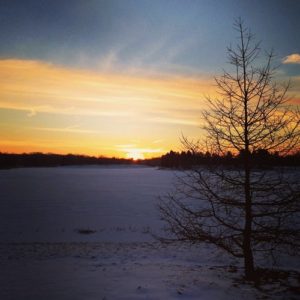
You can readily see the structure of a tree in the winter when leaves aren’t filling out the canopy. This helps when making educated, minimal pruning cuts (and reduces the amount of work you have to do, too!). The strong convergent habit of this larch tree is easily visible.
1. During the winter, you can easily visualize the full structure of the tree. After fall leaf drop, there are no leaves to obscure the upper canopy of branches. This makes it much easier to decide pruning strategy (i.e. which limbs are being crowded) and to easily identify structural defects (like crossing branches, weak branch crotches, and dead/diseased limbs).
2. Contrary to common belief, dead/diseased branches are still easy to identify in the dormant season. While obvious signs of brown leaves may not highlight dead branches, an arborist can look for other cues such as sunken or shriveled branches, missing bark and saprophytic fungi. Leaves that died during the growing season, depending on the reason, also have a tendency to stay attached to the tree through the winter. It’s also easier to identify damage or defects that lead to branch death without leaves obscuring the view.
3. Pruning a tree often necessitates removal of live branches from the canopy. Removing these limbs during the growing season can lead to excessive resource removal. You lose both the limb AND the leaves when pruning just after the tree leafs out/pushes new growth. In the fall, trees pull the nutrient resources from their leaves to store in the root mass for the winter, hence the leaves turning color and dying. If we prune during the dormant period, we can avoid excessive loss of nutrients from the tree, and therefore reduce the amount of stress created when pruning. This is also why Arborists say that pruning in the spring- just after the tree used the stored resources to push new growth- should be done with caution.
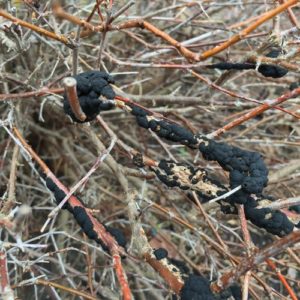
Winter can be a great time to scout for diseases and defects on plants. This black knot, normally obscured by the leaves of the shrub, can be easily spotted during the off-season. In the winter, you can safely prune out this diseased wood without concern of it spreading.
4. Every pruning cut can be thought of as an intentional wound made to a tree. These wounds are openings for diseases (mostly rots) to enter the tree until they callus over. There are no diseases around in the winter to infect trees through new fresh cuts. However, wounds are also subject to extra exposure from the cold temperatures of winter. This is why some more sensitive trees are recommended for pruning in late winter, after the coldest months are in the past. A Nels Johnson arborist can help you determine which trees are more sensitive to winter damage.
5. Similar to the last point, there are several high concern diseases that are moved around (called vectored) by insects during the growing season. These insects are attracted to the sap of the trees they reproduce/feed on, mostly because wounded or stressed trees are easier to inhabit. When pruning cuts are made during the growing season, flowing sap will naturally be extruded from the wound. The two best known diseases that infect through this method are oak wilt and dutch elm disease. This is why it is important to only prune oak and elm trees during the dormant season, when the beetles are absent and sap flow is reduced. This preventative practice is so effective at slowing the spread of disease that some municipalities forbid the pruning of oaks and elms during the growing seasons. Any reputable tree care company in Chicago will not prune oak and elm trees between April 1st and November 1, with deadwood removal and risk mitigation being the exceptions. If you must prune an elm or an oak tree during the growing season, wound dressings are recommended to stop excessive sap flow.
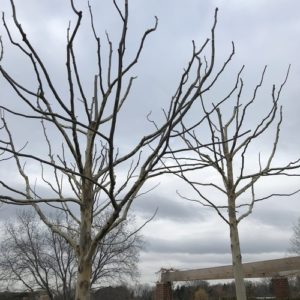
Pruning trees in high traffic areas, or with special needs, can be very difficult during the growing season. These London Plane trees are located in the middle of an outdoor amphitheater, normally packing during warm weather. By pruning in the dormant season, time can be taken to properly pollard the canopies without having to jockey for workspace.
6. An understated benefit for dormant pruning is that winter is when the rest of the landscape is also dormant. The ground is frozen, reducing any soil compaction from large machinery and concern about damaging annual and perennial plantings. Snow gives more flexibility of drop zones for large limbs, and cushions the plant material below. Loud machinery is less of a nuisance when families are bundled up inside staying warm. Additionally, there is less traffic in the landscape with routine mowing and landscape crews, reducing unintended run-ins and scheduling conflicts.
Dormant pruning provides many benefits over in-season pruning, including smaller factors not listed here. With some exceptions, winter pruning can be the best (and least stressful!) time to have your large trees pruned. If you’re interested in having your trees inspected, or are unsure if dormant pruning is right for your landscape, have a Nels Johnson Arborist schedule a site visit today! Give us a call at (847) 475-1877 to schedule an appointment now!
Late Summer Pests
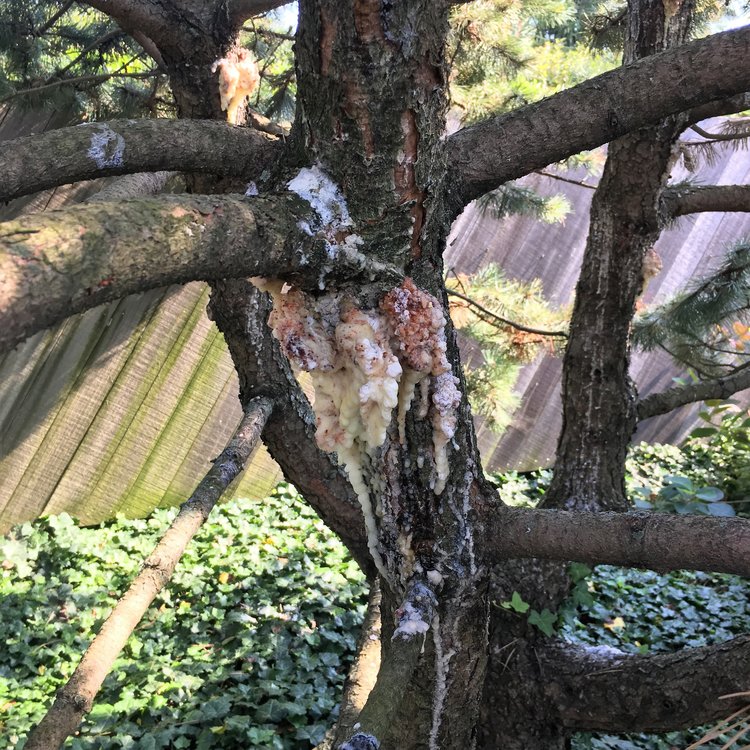
Characteristic pitch mass forming under branch whorl of mugo pine.
ZIMMERMAN PINE MOTH
This insect has an extended life cycle in which it repeatedly bores under the bark of common pine trees to feed and overwinter. There are two treatment windows timed for the larval stage of the insect; one in April and another in August. Severe damage will cause branch and whole tree death.
- What to look for: The adult moths are nocturnal and difficult to see. Look for characteristic pitch masses under large branch connections at the trunk.
- Where to look: Preferred hosts are Scots and Austrian Pines, but also Mugo and White Pine
- What to look for: A bronzing or stippling of leaves. Severe infections have visible webbing on affected branches.
- Where to look: This insect is a generalist and has over 180 preferred plant hosts! Commonly seen on Arbor Vitae and Cotoneaster.
- What to look for: Look on the underside of branches for large, whitish/cream colored bumps. Also look for blackened leaves caused by sooty mold growth feeding on the honeydew secretions.
- Where to look: Most Magnolia species are susceptible to some level.
- What to look for: check low branches for physical signs of the insects. Commonly the infestation is made apparent by heavy sooty mold presence on underlying surfaces.
- Where to look: Aphids come in a wide range of flavors and prefer a wide range of hosts
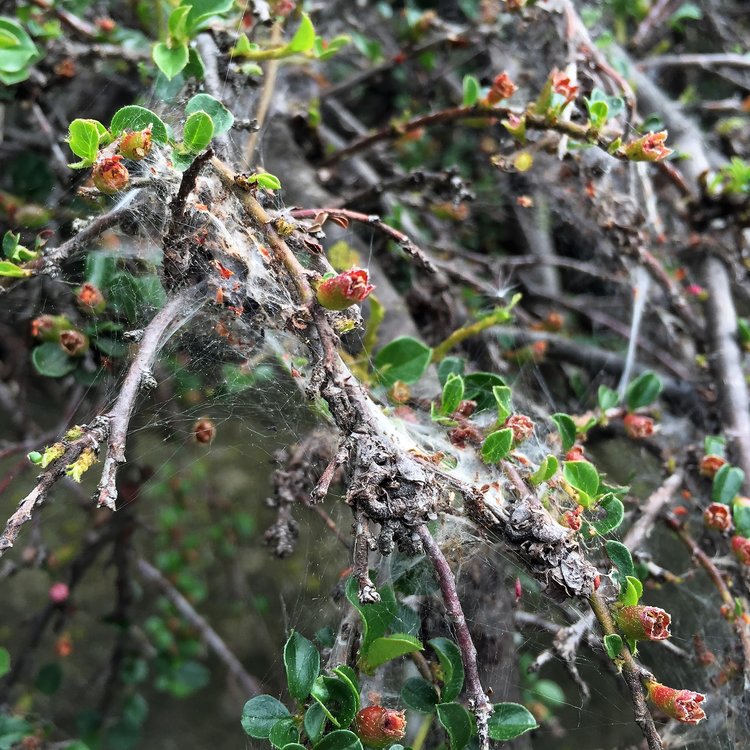
Webbing formed by two-spotted spider mite on Cotoneaster
SPIDER MITES
Spider Mites fall into two categories: either cool-season or warm-season (relating to their active weather conditions). Two-Spotted spider mites are a common, warm-season spider mite that thrives in hot and dry weather. Individual insects require a magnifying loupe to see, but in heavy infestations look like fine sand collecting on the underside of affected leaves.
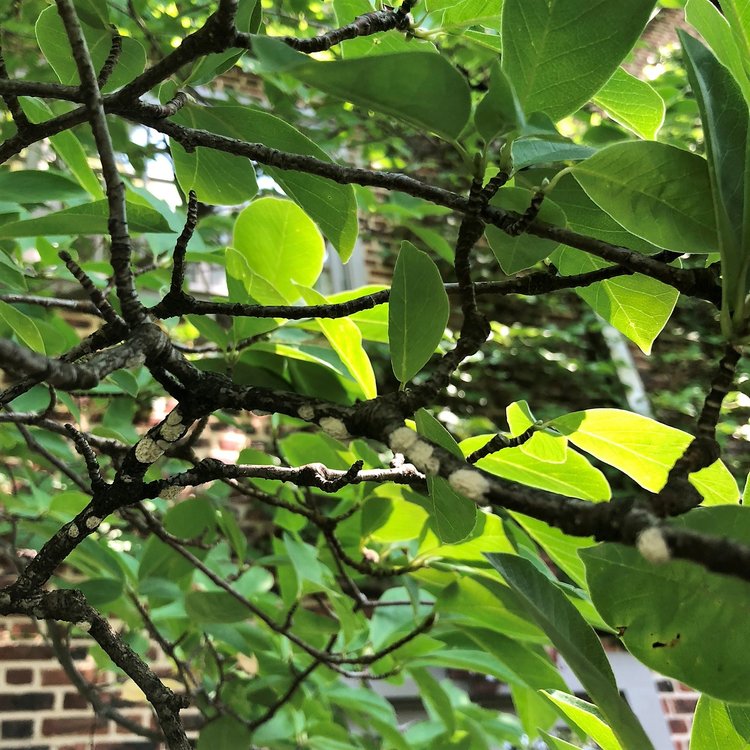
Dried magnolia scale will remain attached to the tree after treatment and subsequent death.
MAGNOLIA SCALE
One of the largest and easiest to identify scales, this insect is a menace to magnolia trees. Magnolia scale is a soft-bodied scale, and can be found in large clusters along woody stems. Frequently these insects become a nuisance due to their excessive secretion of honeydew, which causes sooty mold to coat anywhere it lands. Systemic treatments are highly effective, as well as well timed spray treatments in the late summer.
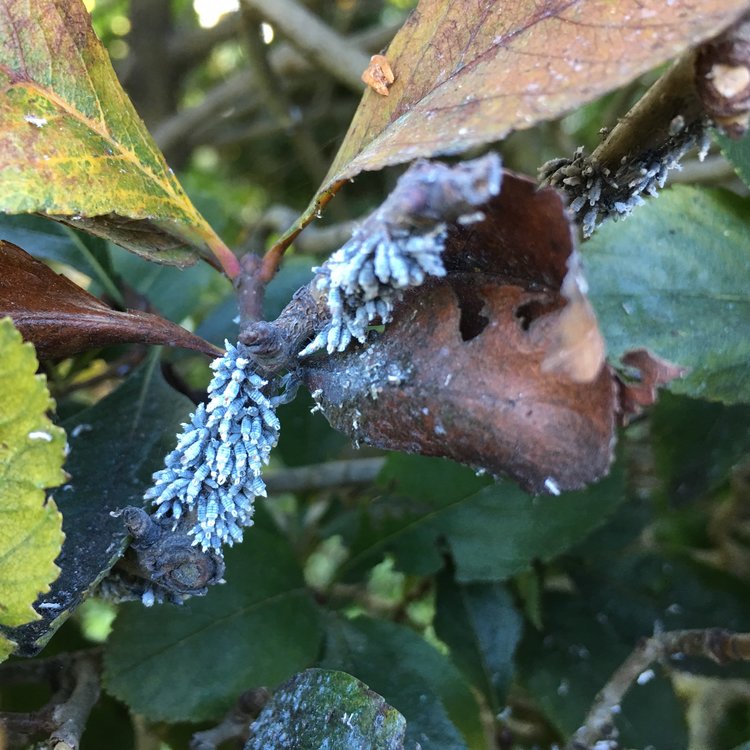
Aphids come in many shapes and sizes, including differences between life stages of the same species.
APHIDS
Aphids (and most piercing-sucking insects) are at their peak levels right now. There are a wide range of aphids species that look very different. These insects will rarely kill their host, but heavy infestations can weaken plant defenses to more serious pests. Additionally, excessive honeydew production can cause surfaces below to be covered in sticky residue and sooty mold. Some more serious pathogens (bacterial and viral) have evolved to move from host to using by hitching a ride on these insects.
Plant Healthcare and Disease Prevention
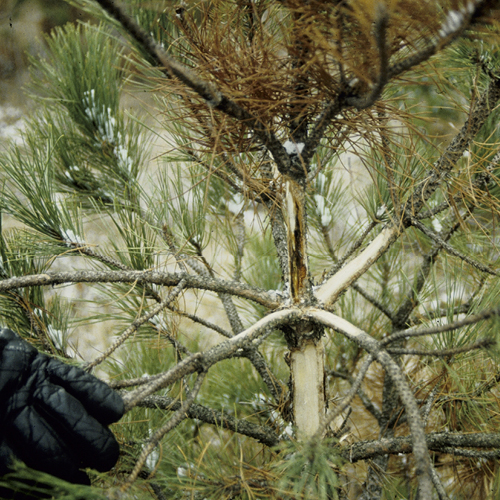
Diplodia Tip Blight
Diplodia tip blight is a fungal disease that kills the tips of the branches of pines, and less frequently spruce and firs. In the blight stage, it can cause severe dieback and the fungus can grow into the stems and main trunk where it becomes a canker disease.
- Where to look: Austrian, ponderosa, mugo, red, and Scots pines
- What to look for: A few brown needles at the tip of the current season’s growth is the first evidence of tip blight.

Boxwood Blight
Boxwood blight is a serious fungal disease that kills boxwood trees and shrubs. The blight typically spreads when people acquire infected bushes or trees and then plant them alongside or in place of their existing, healthy boxwoods.
- Where to look: Boxwood
- What to look for: Spotted leaves, stem cankers and defoliation. The spots usually appear as light- or dark-brown, circular lesions that are often surrounded by a large yellow halo.
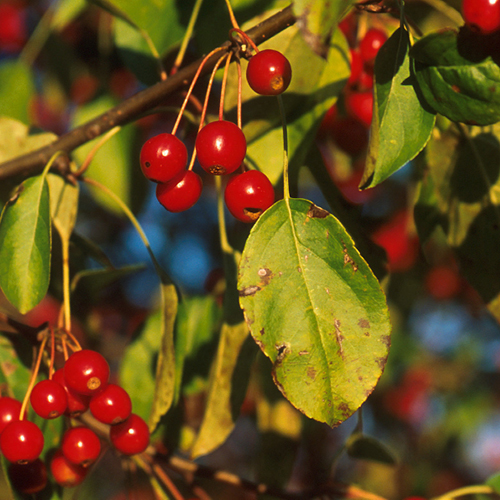
Apple Scab
Apple scab is a disease of apple and ornamental crabapple trees that attacks both leaves and fruit. Severely infected leaves become twisted and puckered and may drop early in the summer.
- Where to look: Apple and crabapple trees
- What to look for: The fungal disease forms pale yellow or olive-green spots on the upper surface of leaves. Dark, velvety spots may appear on the lower surface.
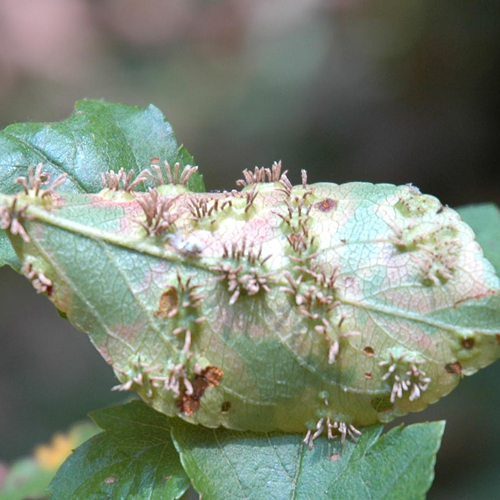
Cedar-apple rust
Cedar-apple rust is a fungal disease that requires juniper plants to complete its complicated two year life-cycle. From year to year, the disease must pass from junipers to apples to junipers again; it cannot spread between apple trees.
- Where to look: Junipers, apple and crabapple trees.
- What to look for: Pale yellow and orange pinhead sized spots on the upper surface of the leaves shortly after bloom. Heavily infected leaves may drop prematurely. Junipers experience large stem cankers that ooze when wet.
- « Previous
- 1
- 2
- 3
- 4
- Next »
